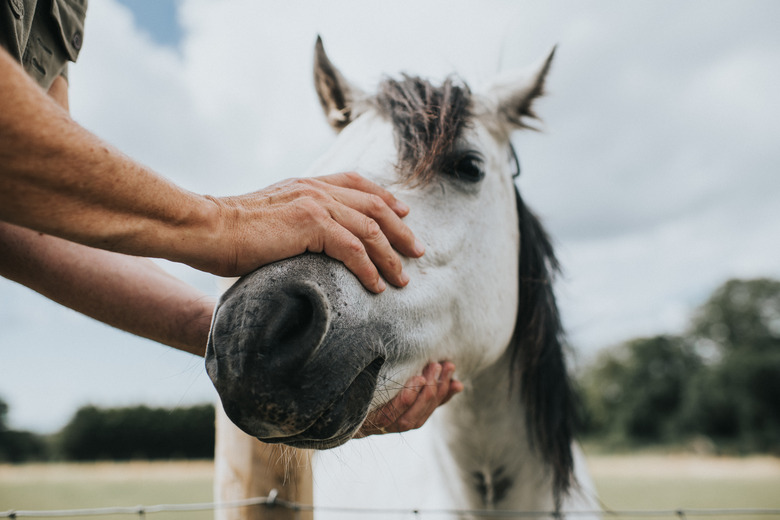Science Fair Ideas With Horses
Science fair ideas involving horses make great projects for students who are animal lovers and who live in parts of the country with an ample supply of stables and ranches. Such science projects also provide a nice break from the common animals used in experiments, such a mice, rats and gerbils. Horses are such powerful intelligent animals that your students can potentially take such a project in a variety of directions.
Sensing a Storm
Sensing a Storm
Test the hypothesis as to whether or not horses can sense a storm before it happens. Check the weather reports, noting all the storms for the upcoming eight weeks. Watch and document how a horse behaves before a storm approaches, noting its behavior eight hours before the storm and each hour following, as the storm draws closer. Conduct a comparative study with humans, observing their behavior before a storm. Assess the difference between the horses and humans.
Keeping a Horse Cool
Keeping a Horse Cool
This simple experiment for a younger elementary student focuses on animal comfort and care. The project examines which saddle pad will keep a horse cooler, a fleece or cotton pad. Most students will probably hypothesize that the cotton pad, a natural material, will keep a horse cooler. Gather data by placing temperature stickers on the left, right and middle parts of the saddle pad, taking the horse out for 15 minutes at a trot and recording the temperatures underneath the pad. Do this for at least four days, two days using a cotton pad and the other two days using a fleece pad. Have your students observe and document the results.
Grooming and the Horse's Heart Rate
Grooming and the Horse's Heart Rate
This project focuses on the hypothesis that grooming a horse helps to relax it, and thus slows down its heartbeat. For this experiment, you'll need at least three different horses, a stopwatch, a stethoscope, and a pen and pad of paper. Take the resting heart rate of each horse. Then take each horse out for three minutes at a trot. Take each horse's average heart rate after this exercise. On the following day, repeat this procedure except groom the horse after the exercise and then take its average heart rate. Repeat these steps for at least a week, and assess what effect grooming has on the heartbeat of a horse.
Cite This Article
MLA
Cummings, Lane. "Science Fair Ideas With Horses" sciencing.com, https://www.sciencing.com/science-fair-ideas-with-horses-12743041/. 22 November 2019.
APA
Cummings, Lane. (2019, November 22). Science Fair Ideas With Horses. sciencing.com. Retrieved from https://www.sciencing.com/science-fair-ideas-with-horses-12743041/
Chicago
Cummings, Lane. Science Fair Ideas With Horses last modified August 30, 2022. https://www.sciencing.com/science-fair-ideas-with-horses-12743041/
